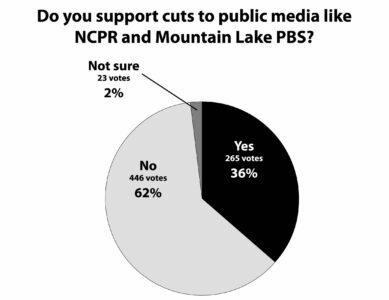One is lonely, but two can harmonize
The lone earring lounges on the table, looking like a rejected blind date at a bar. Its match, its rightful partner, is nowhere to be seen. Once again, that “perfect spot to keep something safe” wasn’t. And, like so many objects before it, an earring has been lost. So now, I am looking at one perfectly good piece of jewelry that is supposed to be part of a pair. So, the question is, what do I do with the remaining bauble?
Three inches long and made of green stone, it doesn’t resemble anything else I own. I could just wear it as a single, but I know that won’t work. I will simply look lopsided. While trying to be avant-garde in the ’90s, I had an asymmetrical haircut: bobbed on one side, shaved on the other. Every old man I encountered made jokes like: “Did the hairdresser quit halfway through?” or “Back in my day, we would call that a mistake, a big mistake.”
A cool vintage jacket I own has a skewed hem. Every time I wear it, people pull me aside and whisper that I have buttoned up my coat wrong. These experiences prove that wearing one earring would be more trouble than it’s worth.
Still, I can’t throw the earring out, and I know I’m not alone. The futile hope that a missing match might reappear might be universal. After all, why dispose of something perfect, even if it isn’t useful? All the lost gloves elevated to visual spots like trees, signs and guard rails during Winter Carnival illustrate the shared hope that stray pairs will be reunited. Sadly, like the handmade mitten still sitting, months later, on the Church Street wall, most of these reunions will never happen.
Single shoes are a whole other problem. My newfie-lab mix once ate one brand-new wool clog. The shoes were a luxury I couldn’t afford at the time, so the one pure, untouched clog haunted me. The lonely sole mate hid in my closet for years — too good to throw away, but utterly useless.
A quick Reddit search confirmed that this issue is common. Responding to the question, “What can I do with a single shoe?” The top answer is “Attach to fake legs … that are wearing pants and make it look like you’ve got a body in your trunk because just the foot and shoe are hanging out.” Not as funny, but certainly more useful is the reference to the National Odd Shoe Exchange (NOSE.), which accepts new, unused, unpaired shoes to be donated to those with unusual requirements.
Fortunately, just like for humans, being mateless doesn’t have to equate to being lonely, particularly when it comes to socks. My son Quin was always in too much of a hurry to locate a pair and would throw on the first two he located. “What’s the problem? They both have a heel and toe — so they match.” For others, dissimilar hosiery could be easily hidden under pants. What others didn’t see saved these fashionistas.
And then there are the rebels, like retired science teacher Gail Meyer, who rocked mismatched socks daily. What started as a physical need to wear socks with stiff clogs led to an accidental first appearance of her differing socks. Of course, the students homed in on Gail’s feet, because they tend to notice every detail except for the actual work. And the students laughed. Sometimes the smallest things can bring great joy. So, Gail continued, now deliberately choosing unpaired socks, and the students continued to get a kick out of it.
While she may have wanted to bring a little levity to the school day, my guess is she never thought she’d be a trendsetter. Fast-forward to the present, several companies market pairs of unmatched socks — albeit coordinated ones. Sporting differing hosiery has become so ubiquitous that meaning has been attached to the practice. Mismatched sock wearers are seen as compassionate, accepting differences, embracing individuality and breaking free from convention.
And I, along with her former students, would say these attributes fit Gail like a glove or, more fittingly, a sock.




